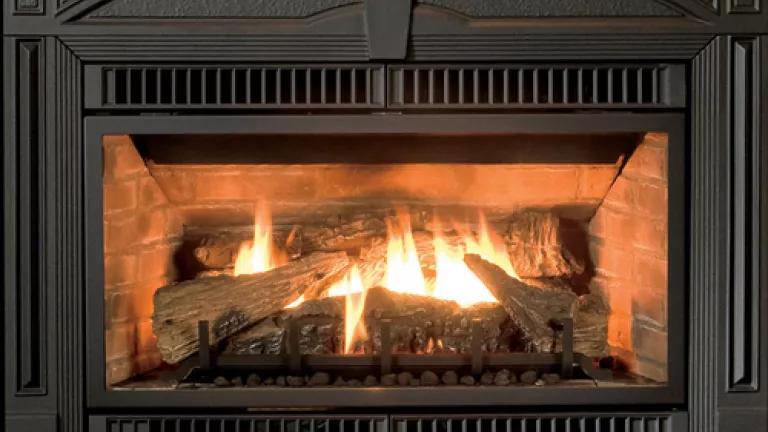First Efficiency Standard Proposed for Gas-Fired Hearth Products to Waste Less Energy and Save Money

The pilot light design standard proposed by the Department of Energy (DOE) yesterday for such products as decorative gas log sets, fireplaces, freestanding stoves, and accessories would reduce their fossil fuel energy consumption when consumers aren't even using them. This will help Americans save money--on wasted energy in standby mode and also cut carbon and other air pollution.
This is great news because hundreds of thousands of natural gas-fueled hearth appliances are sold annually. The Hearth, Patio and Barbecue Association estimates almost 785,000 were shipped in 2013, alone. By focusing on the energy wasted by pilot lights, the DOE proposal would give manufacturers complete flexibility in the design of these decorative products.
This standard is expected to save consumers an estimated $165 over the lifetime of each gas hearth product. It has the potential to net Americans $1 to $3 billion in savings and cut U.S. energy use by .69 quadrillion BTUs (as much as more than 4 million U.S. homes use in a year) while avoiding almost 37 million metric tons of dangerous carbon pollution due to more efficient energy use by products sold over a 30-year period beginning in 2021.
And by 2030, alone, the new standard would cut carbon emissions by 11 million metric tons cumulatively, which is another important step toward President Obama's goal of cutting carbon pollution by 3 billion metric tons from efficiency standards by 2030.
Huge benefits from efficiency standards
The hearth product standard proposed yesterday is the latest addition to the list of more than 50 products used in homes, businesses and factories that use energy smarter thanks to the DOE's Appliance Standards Program. These standards cover common household appliances like refrigerators and air conditioners, as well as commercial and industrial equipment like electric motors and distribution transformers--and soon hearth products.
Taking into account all of the benefits that have accrued since the first national energy efficiency standard was set, by 2035 U.S. electricity consumption will be cut by 14 percent (reducing the need to use polluting fossil fuels to make it); consumers and businesses will have saved more than $1 trillion; and the annual natural gas savings would be enough to heat 32 percent of all natural gas-heated U.S. homes.
We're delighted that the standard proposed this week would add even more savings to these impressive totals.
